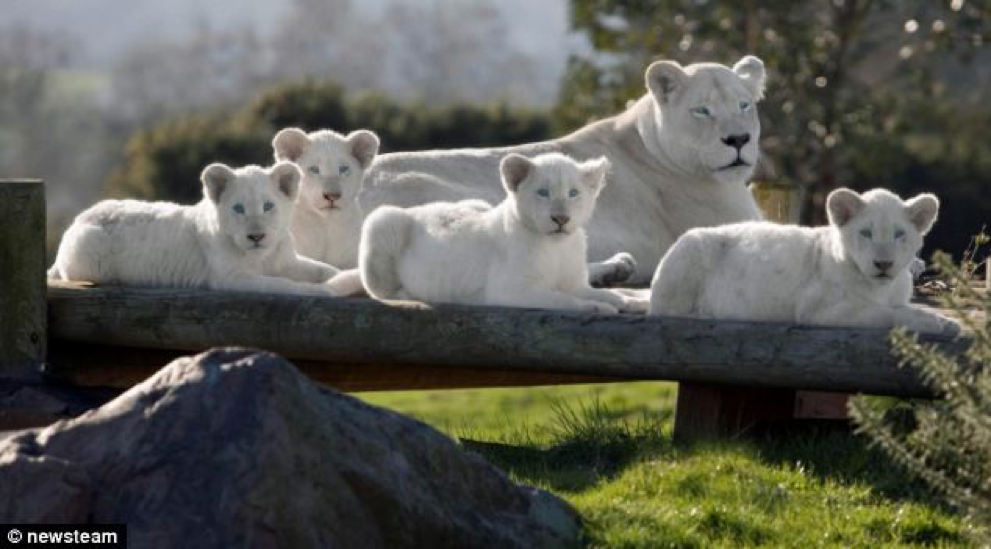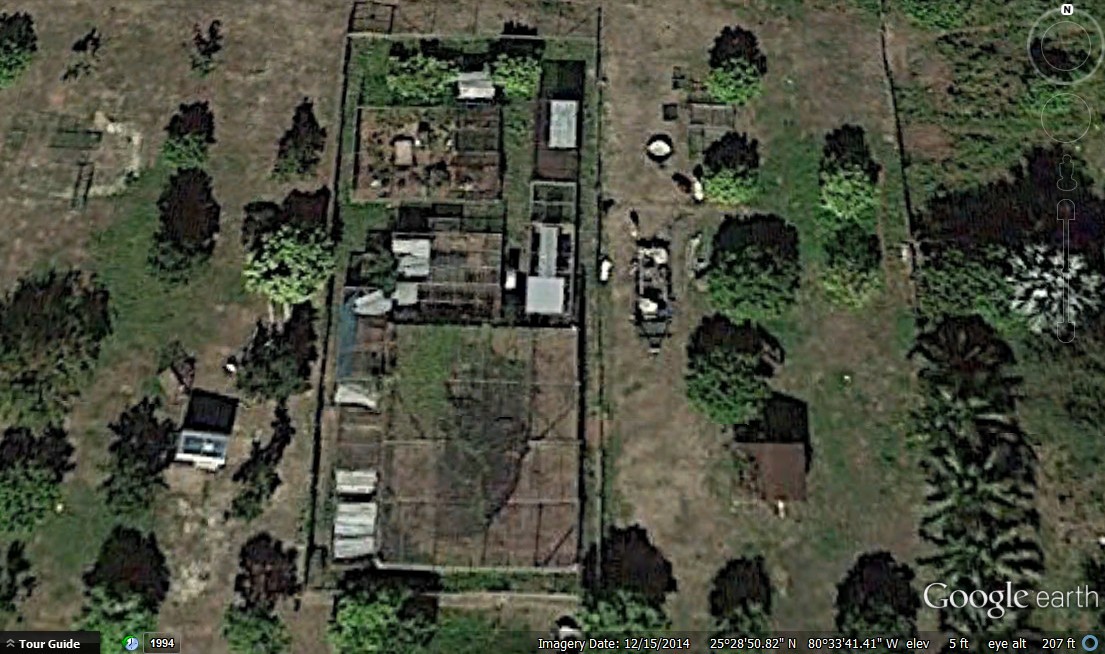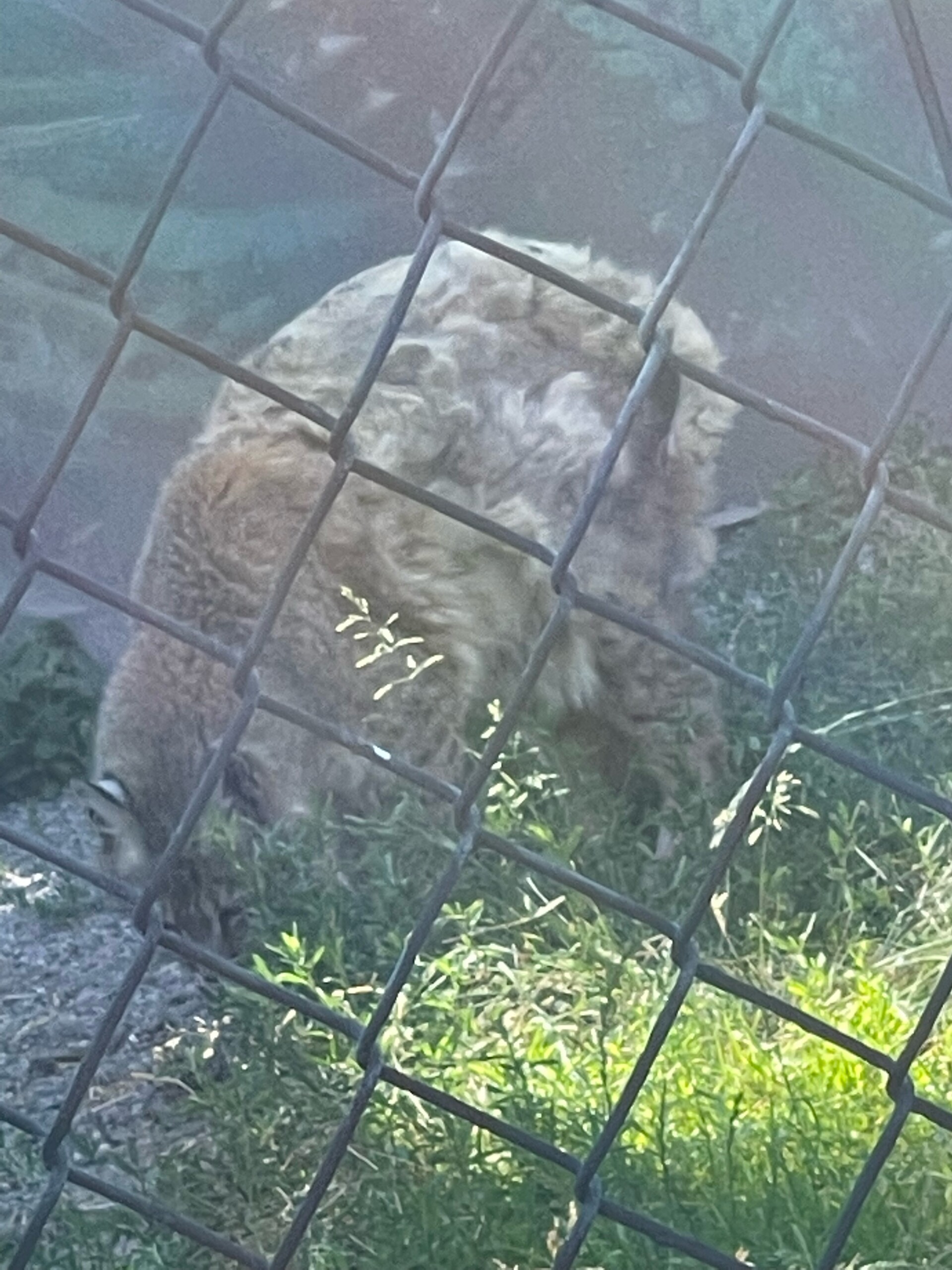Mia and the White Lion
Mia and the White Lion – BOYCOTT This Appalling and Highly Ironic Movie about the Exploitation of Lion Cubs…That Exploits Lion Cubs to Make the Movie!
Mia and the White Lion is a french film by director Gilles de Maistre. It was released in France in January 2019 and then in other global markets. Synopsis:
“The incredible love story between a child and a white lion, as you’ve never seen before. Mia is 11 when she forms an uncommon relationship with Charlie, a white lion cub born on her parents’ big-cat farm in South Africa. For three years they grow up together, developing a caring symbiotic relationship. By the time Mia turns 14, Charlie has become a magnificent adult white lion. But then she learns the awful truth – her father wants to sell Charlie to trophy hunters. Devastated to the quick, Mia has no alternative but to flee with Charlie.”
Gilles de Maistre was supposedly inspired to create this film after learning about the horrors of South Africa’s lion breeding/canned hunting industry. He is fascinated with “animal whisperers” and has filmed documentaries in the past about people who claim to have “special relationships” with wild animals, including a TV documentary about pseudo-conservationist Kevin Richardson and an upcoming documentary, Dans le secret des animaux, which follows Richardson as well as a man living with grizzly bears and a “wolf whisperer.” Maistre calls these men
“Ambassadors of animal protection… …able to form a special relationship with them. The report describes the extraordinary and unique relationship that these people have developed with animals and offer a light on intuitive communication, with empathy and Nature’s respect.”
However, ICARUS has debunked nearly all of the “whisperers” in that film as nothing more than glorified exotic pet owners.
On one of his previous projects, Maistre visited a lion breeding farm in South Africa to film the relationship between the lion cubs and the 10-year-old son of the farm’s owner. Maistre was reassured by the farm that they were breeding lions for “conservation,” but later learned that the cubs were being raised to be shot in canned hunts. So, to “raise awareness” about the exploitation of lions in the canned hunting industry, he teamed up with Kevin Richardson…to create a movie that exploits lions purchased from canned hunt breeders. It doesn’t get more ironic than this folks! What a tragic waste of an opportunity to expose canned hunting.
To create Mia and the White Lion, Richardson purchased six newborn white lion cubs (two males and four females) from Ukutula Wildlife Park, a notoriously abusive South African “lion mill” and petting park with known ties to the canned hunting industry — the very thing the film claims to be against. Ukutula ships cubs which have outgrown petting to private overseas zoos and their “other farm,” a canned hunting ranch called Kunkuru. Per a former Ukutula volunteer:
“One day on ranger duty we were going to “the other farm” to clean enclosures and feed the lions. When we arrived there I found it odd that the vehicles on the other farm all were equipped with mounts for rifles. I asked one of the rangers if this was a hunting lodge to which he replied “I don’t know”. As we left I made a mental note of the farms name and jumped on Google. I found the corresponding website and realised that yes, the lions were at Kunkuru- a bow hunting lodge with “dangerous game available on request” (as stated on their website). The story we were told was these 20 lions were awaiting crates to be shipped to the Congo. Because apparently they had outgrown the ones made for them. I think I recall being told there was troubles with payment. I can’t remember all the details. But yes, there were 20 lions from Ukutula living at Kunkuru. There is stuffed lioness in the Kunkuru dining room …. It could be one of the missing Ukutula lions, who knows… The bow Hunting site says: “Kunkuru is one of the few ranches where Lions are legally kept” and that ” dangerous game can be hunted by prior arrangement. Kunkuru has 10 strategically positioned blinds (tree, elevated & pit) “Walk In” blinds are erected for special hunts.” Blinds are usually used when they hunt lions feeding on bait. Note the same old lie: lions from Ukutula are going to Congo…. although there is no record on the CITES database of any lions being exported to Congo from South Africa.“
This is what Kevin Richardson and everyone involved with this “heartwarming ecological tale” were supporting. And according to the archived production website;
“Casting on the film started in April 2014 and took over four months. Children who had made the short list spent a day at a lion farm [Ukutula], where they interacted with lion cubs aged from new born up to 6-months old and were observed by Kevin Richardson and the director, Gilles De Maistre. Their final casting decision was determined by the way in which the children interacted with the lions.”
Once the child actors were chosen, six newborn cubs were purchased from Ukutula, likely for tens of thousands of dollars. These cubs were ripped from their mothers as soon as they were born so that they would imprint on the human cast and crew of the movie during filming. This was done per the dubious advice of Richardson the “lion expert”, who explained that “the only way for the lion not to harm the child would be that they grow up together. Wild cats only “tame” themselves after a long process of habituation.”
“To truly become a part of Charlie’s life, young actors Daniah De Villiers (Mia) and her film brother Ryan Mac Lennan (Mick) had to live side by side with the lion chosen in the cradle to share the screen with them. Throughout the three years of shooting, they followed a specific, almost-daily training (supervised by Kevin Richardson himself) teaching them how to create and maintain this privileged relationship with the lion.”
De Maistre calls this forced imprinting process “building a relationship with the lion from the moment he was born,” but a more accurate term might be Stockholm Syndrome — or as ICARUS calls it, “ritualistic abuse.”
Now that the filming is over, all of the lions used in the film are living on Kevin Richardson’s wildlife reserve, where they are supposed to stay for the rest of their lives. Richardson and his fans claim that by buying these cubs from Ukutula, he “rescued” them from being shot, but the money he spent to “save” these six lions just funded the slaughter of other lions that weren’t as lucky.
Captive Wildlife Watchdog has published an excellent and very detailed article explaining all the problems with this foolish project and Kevin Richardson’s methods; mainly that “if your foundation truly–and ethically–fights against an abusive industry, you do not participate in that industry. Period.” As you know, exploiting animals in a misguided effort to “raise awareness” never works, it just sets a bad example and drives more traffic to the petting parks and canned hunting breeders, not to mention perpetuating the fantasy that lions can be made into tame companions if you just “love” them enough.
Countless humans and big cats have died because of these irresponsible fantasies. It also baffles me that in the article you sent me, the director insists that “owning a lion as a pet is certainly not the message” of his film about a lovable pet lion. Rather, it’s somehow supposed to “demonstrate how humans can co-exist harmoniously with animals by giving them the respect they fully deserve.”
Not ripping them from their mothers in order to cuddle with them and use them in movies might be a good start to this “respect.”
The film was largely financed by the environmentally-focused Prince Albert II of Monaco Foundation and the Monaco Government as “part of Monaco’s agenda of promoting awareness for ecological and environmentally-protective topics.”
Princess Charlene of Monaco has long been the patron of the Kevin Richardson Foundation, stating that “I salute Kevin Richardson and am honored to be the patron of his foundation. In an ideal world no wild animal would be kept in captivity and canned lion hunting should be declared illegal. I willingly lend my influence to rekindle respect for lions and the African wilderness, they so beautifully inhabit – in the hope that this is the ultimate guarantee of their survival.
While it’s great that the royal family of Monaco wants to help conserve wild lions, funding Kevin Richardson’s pets, and this film, is not the most effective way to do it. Richardson’s “foundation” talks a big game, but appears to do very little legitimate conservation work for wild lions, and mainly exists to fund the reserve for his privately-owned “rescue” lions, most of which he bought from canned hunting breeders as tiny cubs. It also“seeks to enable children all over South Africa to have access to their wildlife by funded visits to the sanctuary.” The same “sanctuary” where a young woman was fatally mauled by one of Richardson’s lions.
If Monaco is serious about “respecting” lions and their habitat, we believe their royal patronage would do much more good going to one of these legitimate lion conservation groups instead:
- Ewaso Lions works with local people in the Samburu – Isiolo ecosystem of Kenya to study wild lion populations and reduce retaliatory killings. Their efforts have led to a networks of “community conservancies,” some of the only places in Africa where wild lions exist outside of protected areas.
- The Greater Limpopo Carnivore Programme is a professional conservation research initiative working in the Greater Limpopo Trans Frontier Conservation Area, one of Africa’s last “lion strongholds” critical to the survival of the species. They protect lions and their habitat through sound research and direct conservation action, like funding “Lion Protection Units” to fight poaching.
- Panthera’s Project Leonardo Initiative is the first conservation plan that encompasses the lion’s entire African range. It aims to protect lions in the key lion conservation landscapes that remain through protecting land, creating wildlife corridors, preventing poaching, and mitigating human-lion conflicts. The program’s overall goal is to bring lion populations back to a minimum of 30,000 individuals within 15 years. Panthera is currently leading or supporting lion conservation efforts in 15 of the 27 lion range states in Africa.
- Lion Guardians works in multiple lion range countries to recruit young, traditional pastoralist warriors to learn the skills needed to effectively mitigate conflicts between people and wildlife, monitor lion populations, and help their own communities live with lions. By actively engaging in their solutions-based conservation model, people who were once lion killers become effective lion protectors.
- African Parks is a nonprofit conservation organization responsible for the long-term management of Africa’s protected areas in partnership with governments and local communities. Their 1,000+ rangers are responsible for all law enforcement and anti-poaching patrols in 10.5 million hectares of habitat.
Don’t support abuse by paying to see the movie or by sharing anything done by people like Kevin Richardson or Eddie Serio in close contact with wild cats.


